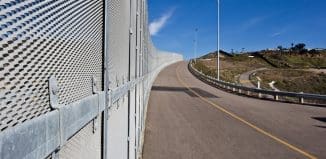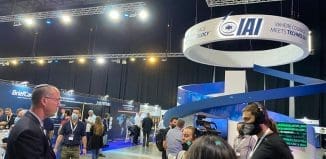Border and Perimeter Security Concept and Framework
This post is also available in:  עברית (Hebrew)
עברית (Hebrew)

To read this srticle in Hebrew
.
 Rad Bynet, an Israeli company, is performing framework solutions for perimeter and border security installations. “Our wide range of solutions provides flexibility to accommodate an array of new and legacy sensors and communications equipment,” says Oded Raor, Director, Global Business Development of Rad-Bynet Group.
Rad Bynet, an Israeli company, is performing framework solutions for perimeter and border security installations. “Our wide range of solutions provides flexibility to accommodate an array of new and legacy sensors and communications equipment,” says Oded Raor, Director, Global Business Development of Rad-Bynet Group.
These advanced solutions are mobile and rapidly deployable with seamless networking capability to support the common operation picture. Several clients have chosen this solution as the leading provider of various Border Protection Solutions.
Raor explains that the process of securing the border region begins with a risk-based threat and vulnerability assessment. “Using various design information, threat modeling and site survey, we are able to determine how to best apply available resources in order to produce the highest level of protection possible.
Bynet can then work with the stakeholders to create an integrated concept of operations, maximizing the value of the networked threat detection technologies, existing border operations, security systems, and personnel resources. Next step is to present to the client a coherent operational and technological solution with a few alternatives and prioritization recommendation at the national and unique regional levels.
Raor goes on to mention some of the technologies used. One is a passive vibration sensor cable specifically designed for outdoor installation on various types of perimeter barriers. The vibration sensor offers a solution for intrusion detection through the analysis of typical vibrations made by a forced entry attempt. The system can recognize motion caused by an attempt to pass through the fence and disregard signals caused by weather conditions, preventing nuisance alarms. Actual alarms are immediately transmitted to the Command & Control Center GIS system.
Another technology involves the use of towers which are located in the proximity of the border. The towers are equipped with ground surveillance radars and long range cameras, and are connected to the Command and Control center via an optical fiber network.
Bynet utilizes ground based radars to rapidly and continuously scan a full 360 degrees, detecting movement in virtually any weather condition, inside and outside the perimeter, 24 hours a day. Following an alert, the system automatically points a day/night camera at the intruder for assessment – all in a matter of seconds. The operator and response team now have what they need – number of intruders, exact location, direction of travel and visual identification – to determine a safe and effective response.
Illustration Pictures with courtesy of IDF’s spokesman unit





























